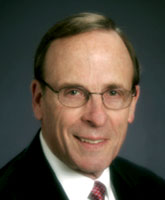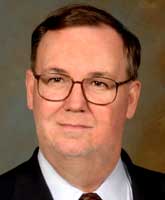Early in 2007, National Cotton Council leadership sharpened its focus on farm policy development -- amidst calls for reform and during a period of unstable negotiations in the World Trade Organization’s Doha Round.
Fortunately, the respective versions of the House- and Senate-passed farm bill contained many NCC-sought provisions. However, as 2007 drew to a close, farm legislation had not cleared a House-Senate conference or gained Presidential approval.
The Doha Round negotiations demanded considerable energy and time from NCC leadership and staff as attempts to single out cotton for separate reforms escalated. The NCC frequently and clearly communicated its opposition to any text that included inequitable cotton-specific language and pressed U.S. negotiators for a stronger commitment on market access.
Viable overseas market access is becoming more crucial to the U.S. cotton industry’s health. However, Cotton Council International’s market development activities more than kept pace with the challenge of exporting as much as 75 percent of the U.S. cotton crop. Through a combination of staff and contract representatives, CCI’s presence overseas now includes on-ground personnel in 16 countries, with active programs in more than 50 countries. CCI-managed market development programs overseas have reached $71.6 million.
Attention continued to be given to China, U.S. cotton’s largest customer. A cotton quality team briefed Chinese mill customers in a visit to that country and U.S. industry leaders reinforced that message in meetings with a Chinese cotton-buying delegation during its U.S. Cotton Belt tour.
Although 2007 U.S. cotton acreage was significantly lower than in recent history, per acre yields set a modern-day record – a testament to producers’ discerning use of available technology and production practices.
The NCC remained very active on regulatory issues and intensified its educational outreach. For example, those latter efforts ranged from the revival of the Cotton Physiology Today newsletter to communicating the importance of producing uniform bales. Cotton research and education was augmented by The Cotton Foundation, which continued to maintain substantial support from agribusiness allies.
Calendar 2007 marked the end of the NCC’s tenure in its headquarters building at 1918 North Parkway in Memphis. The building, which had served the industry well since its completion in 1955, was in need of extensive and cost-prohibitive repair. After a thorough search of suitable property, land was purchased in east Memphis, and groundwork at the site began on a new headquarters building slated for occupation in May, 2008.
The NCC also completed work on its third chronicle of the organization’s activities and achievements on behalf of the U.S. cotton industry. “U.S. Cotton and the National Cotton Council – 1988-2007,” a book authored by retired NCC President/CEO Gaylon Booker, was written prior to the NCC’s 70th Annual Meeting in Memphis in February 2008 and will be distributed to NCC leaders following that meeting.
While numerous farm and trade policy issues remain unresolved as this annual report was completed in late 2007, industry members can be assured that a sound strategy is in place to pursue a course that will strengthen industry members’ competitiveness. NCC efforts will be bolstered by exceptionally strong industry participation in a new finance plan coupled with seasoned, competent staff guided by highly motivated and politically astute industry leaders.
 |  |
| John Pucheu Chairman (2007) | Mark Lange President/Chief Executive Officer |

